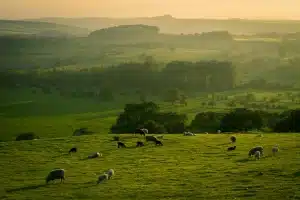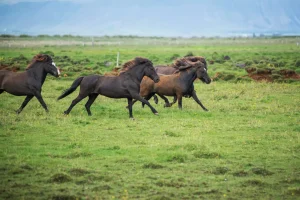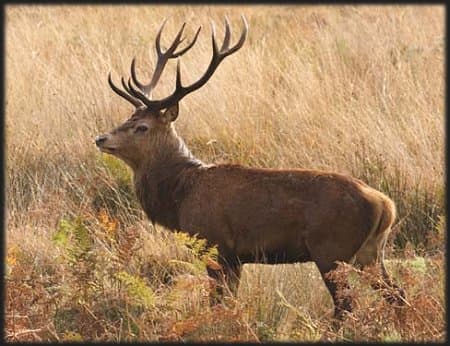Red deer fact file
The
Red deer fact file
Identification tips – a hefty looking animal, particularly stags, red deer are fairly easy to identify because of their mostly-uniform colour, a dark reddy-brown during the summer that turns to a greyish-brown in the winter. The underbelly is paler in both seasons. Rarely is an adult red deer seen with spots and if spots are present they are few in number.
The most distinguishing feature for the stags are the antlers which are long and branched in mature adults. The longer branches nearly always sweep backwards and are fronted by a number of much shorter ones.
The hinds have a paler throat and face than the bucks, particularly in summer.
Preferred habitat – red deer favour open heathlands but are equally at home in wooded areas for both food and cover.
Diet – primarily grazers, red deer eat a large quantity of heather, grass and other ground-hugging plants found on the open heathlands. While in woodland they will eat the fresher shoots of bushes and trees if ground food is limited.
Breeding – healthy hinds can breed by the age of 18 months and give birth to a single calf between the months of May and June, following the mid September to late October mating season, or Rut.
Other points – less common in the New Forest than fallow deer, the red deer are limited to certain areas of the Forest; the open heathlands around Burley are a favourite spot, as is Ober Heath near Brockenhurst. Red deer are most active at dusk and dawn.
During the Rut the stags can be heard making a very distinctive and throaty roaring noise, but for most of the year are not very vocal. Fights between stags during the rut can be fierce and sometimes fatal.
Related Sites

Why Time in Nature Complements Daily Astrological Guidance
Many of us start the morning with a quick look at our horoscope. A few lines can help name our mood, highlight a tension, or point out an opening in the day. What often gets

UK’s best natural spots
Wilderness escapes are not for everyone, that’s for sure. Some people simply prefer holidays where they can lounge all day and take it easy instead of being active, going hiking, swimming, or cycling. But there

Tech Hacks for Exploring the New Forest National Park
The New Forest National Park in the UK is one of Britain’s most enchanting natural destinations. Covering ancient woodlands, open heathlands, and winding walking trails, it offers visitors a chance to step back in time

The Benefits of Outdoor Life for Horses
Life outdoors shapes stronger, healthier horses. Sunlight fuels the body with vitamin D, which helps bones grow dense and resilient. Space allows movement that stables cannot match. A horse stretching into stride, breathing clean air,

New Forest Getaway
The New Forest in southern England is unlike anywhere else, one moment you’re on a country lane, the next you’re face to face with a pony blocking traffic. Villages with thatched roofs appear out of

How Satellite Imagery is Transforming Wildlife Conservation
Today, a myriad of species and their habitats are struggling to survive and are on the verge of extinction due to permanent pressure on deforestation, climate change, and unlawful activities like illegal mining and logging.

